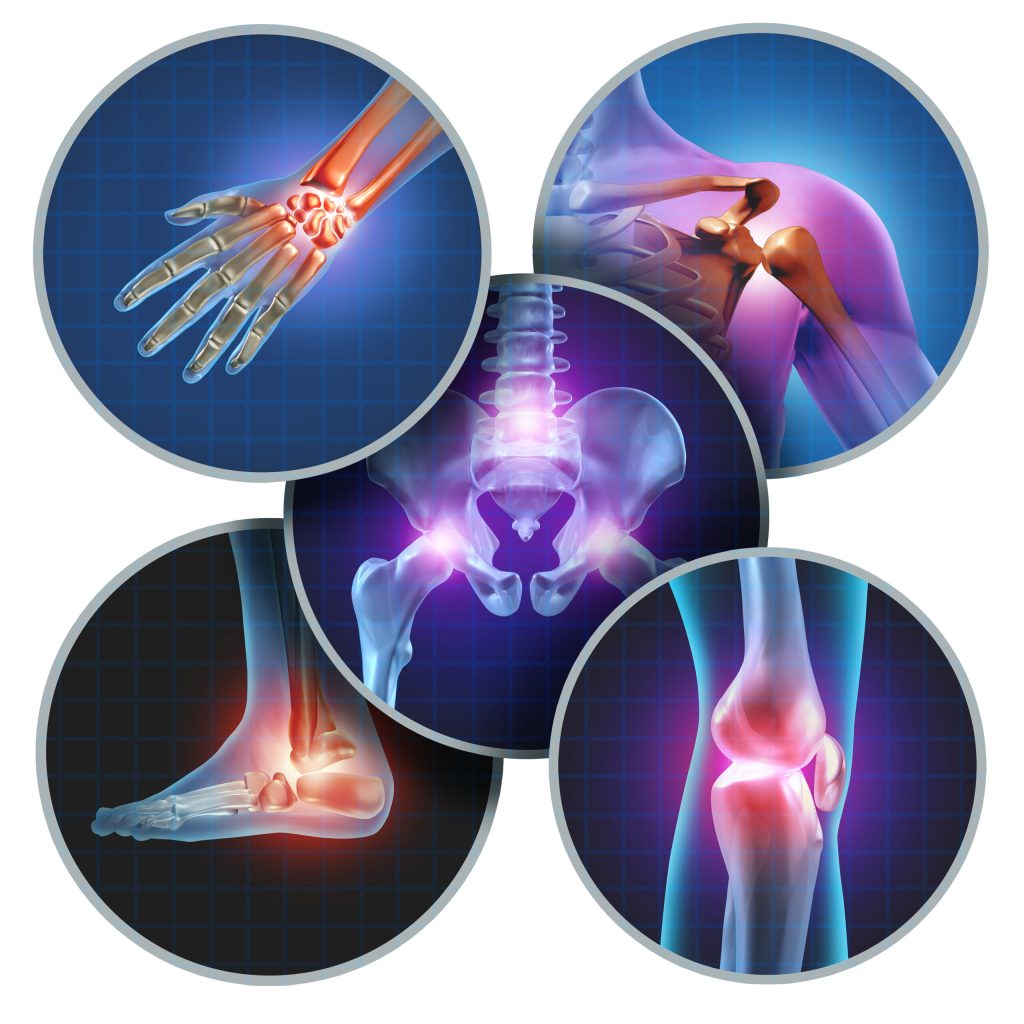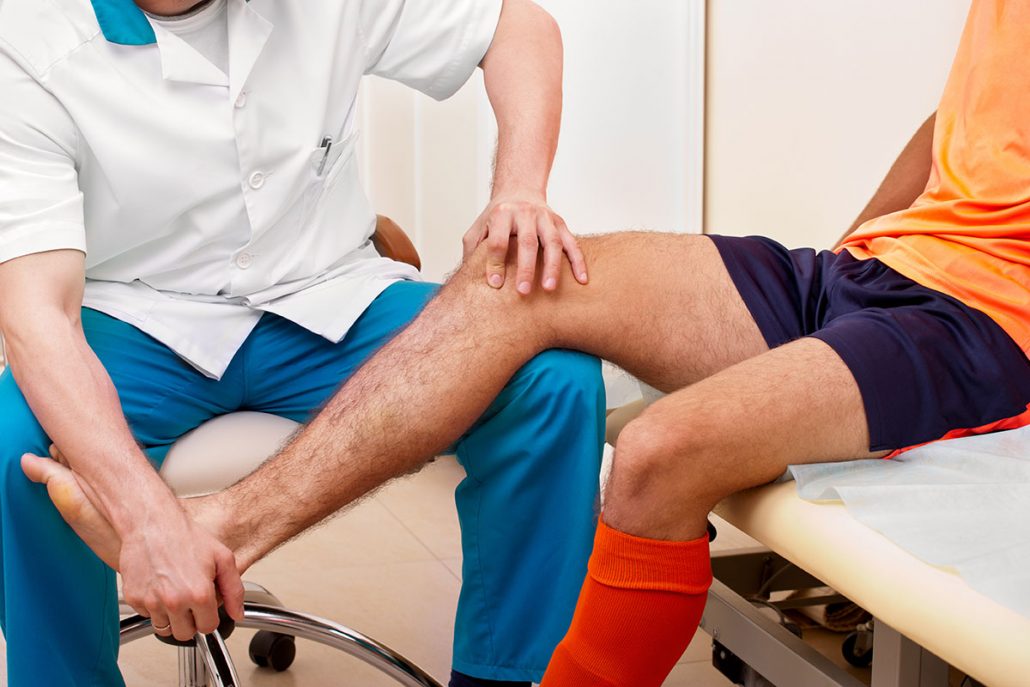Book an Appointment Today
Don’t let spine issues hold you back. Contact us today to schedule an appointment and take the first step towards a pain-free life. At asynchrony we’re here to support you on your journey to optimal spine health.
Overcome Injuries, Regain Strength
At Synchrony Sports Physiotherapy clinic, we understand that sports injuries can be a significant setback for athletes of all levels. Our comprehensive approach to diagnosing, treating, and rehabilitating sports injuries ensures that you can return to your sport stronger and more resilient.
Understanding Sports Injuries
Sports injuries can occur in any physical activity and affect various parts of the body. Common sports injuries include:
- Sprains and Strains: Ligament sprains and muscle or tendon strains are common in sports involving sudden movements and changes in direction, such as in squash, football and basketball. Most common injuries in this category are ACL Tear, Ankle Sprains and Rotator Cuff Strains.
- Fractures: Broken bones resulting from high-impact collisions or falls.
- Dislocations: Joints that are forced out of their normal position, often seen in contact sports and Martial Arts. Most common among these are Shoulder and Elbow dislocations.
- Tendinopathy: Irritation and pain in the tendons due to overuse, common in repetitive sports like tennis or running. Tennis elbow falls under this category, where the tendons of your forearm muscles gets inflamed due to repetitive micro-trauma. Other commonly involved tendons include the Achilles Tendon, the Patellar Tendon and the Rotator Cuff tendon.
- Concussions: Head injuries caused by impacts, particularly in sports like football or hockey.
- Bursitis: Inflammation of the bursae—small fluid-filled sacs that cushion bones, tendons, and muscles near joints. Bursitis commonly occurs in joints that perform frequent repetitive motion, such as the shoulder, elbow, hip, or knee. Sports like baseball, volleyball, or long-distance running can contribute to this condition. It often presents with localized pain, swelling, and reduced movement


Common Causes of Sports Injuries
Sports injuries are often the result of:
- Overuse: Repeated stress on muscles, tendons, and bones without adequate rest and recovery.
- Poor Training Practices: Inadequate warm-up, incorrect playing techniques, undertraining or even overtraining.
- Sudden Impacts: Collisions or falls during high-speed or contact sports.
- Inadequate Equipment: Using improper or worn-out gear.
- Environmental Factors: Playing conditions such as wet surfaces or extreme weather.
Our Approach to Sports Injury Rehabilitation
At Synchrony, we follow a structured, personalized, and evidence-based approach to sports injury rehabilitation designed to promote full recovery and prevent future injuries.
1) Comprehensive Assessment
Our experienced team conducts thorough evaluations to accurately diagnose the injury and identify its root cause. This includes:
- Physical examinations
- Performance testing
- Equipment and shoe assessments
- Review of nutritional history
This multi-dimensional approach ensures we understand every factor contributing to the injury.
2) Tailored Treatment Plans
At Synchrony, we recognize that every injury is unique. Our customized treatment plans are designed to meet the specific needs of each individual and may include:
- Rest and Immobilization: Bracing, taping, and other techniques to limit movement and reduce stress on the injured tissues.
- Manual Therapy: Hands-on techniques to relieve pain, restore mobility, and promote healing.
- Therapeutic Exercises: Targeted exercises to correct biomechanical issues, rebuild strength, enhance flexibility, and restore function.
Our comprehensive approach ensures that the underlying causes are addressed, not just the symptoms.
3) Progressive Rehabilitation
Our rehabilitation program is designed to gradually restore optimal function and performance. Key components include:
- Strength Training: Resistance and weight training focused on building support around the injured area to prevent re-injury.
- Flexibility Exercises: Static and dynamic stretches to improve range of motion, reduce stiffness, and restore fluid movement patterns.
- Functional Training: Sport-specific drills that mimic real-world demands to mentally and physically prepare the patient for return to activity.
- Balance and Coordination: Exercises using balance boards, stability tools, and agility drills to enhance neuromuscular control and reduce the risk of future injuries.
Each stage is adapted to the patient’s progress, ensuring a safe and complete recovery.
4) Ongoing Support and Education
We provide continuous education and support throughout your recovery journey. Our goal is to empower you with knowledge about your condition, treatment plan, and effective injury prevention strategies, fostering long-term health and confidence.
5) Return to Sports Training
Once foundational rehabilitation is complete, we transition patients into sport-specific training that simulates real-game intensity and conditions. This phase focuses on:
- Refining technical skills
- Enhancing sport-specific strength and agility
- Building psychological readiness
Our ultimate aim is to ensure a safe, confident, and high-performing return to your sport.

Benefits of Rehabilitation at Synchrony
- Personalized Care: Treatment plans tailored to individual needs.
- Advanced Techniques: Utilization of the latest rehabilitation methods.
- Holistic Approach: Addressing physical, mental, and emotional aspects of recovery.
- Expert Team: Access to experienced professionals in Physiotherapy, Strength and Conditioning Specialists and Chiropractors.
- Return to Activity: Focused on safe and effective return to sports and daily activities.
Take the First Step Towards Recovery
Don’t let a sports injury keep you on the sidelines. Schedule a consultation with our expert team at Synchrony to discuss your rehabilitation options and get back to doing what you love, stronger and more confident than ever.

FAQs
Sport injuries usually happen because of a mix of factors like poor technique, overtraining, lack of proper warm-up, or using equipment that doesn’t fit well. Sometimes, just moving too quickly into high-intensity activities or skipping recovery days can put extra stress on muscles and joints, making them more likely to get hurt. A collision, sudden twist, or fall during play can also lead to injuries like sprains or fractures. Even things like muscle imbalances, fatigue, dehydration, or just plain bad luck can play a role. That’s why it’s so important to build up strength gradually, listen to your body, use the right gear, and always pay attention to good form when active
Preventing sports injuries is really about being proactive and smart with your training. I believe it’s important to always warm up before you get active and cool down properly afterward—this prepares your muscles and joints for movement and reduces the risk of strain. Building overall strength, especially in your core and the muscles you use most, gives your body extra stability and support. I always pay attention to using the right technique and wearing proper gear, like supportive shoes or protective pads, depending on the sport. Rest is just as important as training—overdoing it or skipping recovery days makes you more likely to get hurt. And finally, listening to your body’s pain and not pushing through soreness or fatigue helps you avoid injuries before they even start. Consistency in these habits can make a huge difference in keeping you active and injury-free.
Avoiding sports injuries requires a proactive and careful approach to training. Always warm up before activities and cool down afterward. This preparation helps your muscles and joints get ready for movement and reduces the risk of strain. Building overall strength, especially in your core and the main muscles you use, gives your body extra stability and support. I focus on using the right technique and appropriate gear, like supportive shoes or protective equipment, depending on the sport. Taking breaks is just as important as training. Overdoing it or skipping rest days increases your risk of injury. Finally, paying attention to your body’s warnings and not ignoring soreness or fatigue can help prevent injuries from happening. Sticking to these habits can greatly improve your chances of staying active and avoiding injuries.
Sports injury rehabilitation is a systematic process that helps you recover from an injury and return to your favorite activities safely. Rehab is not just about healing; it’s about restoring movement, building strength, and gradually regaining confidence in your body. At the start, the focus is on protecting the injured area, easing pain and swelling, and gently improving your range of motion. As you move forward, exercises become more specific to rebuild strength, coordination, and balance, while ensuring that you don’t rush and risk reinjury. In the end, the goal is to reintroduce sport-specific skills and make sure your body is ready for the demands of your chosen activity. The journey can be tough, but a solid rehab plan helps you progress safely, so you come back not just healed, but even stronger than before.
Request a Free Phone Consultation
Fill out the form and we will contact you.
Get In Touch In The Mean Time.
Want to Visit Our Clinic? Please Call Us
